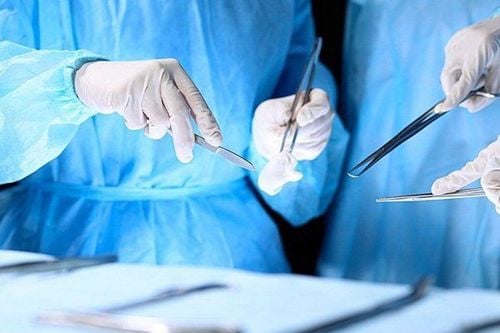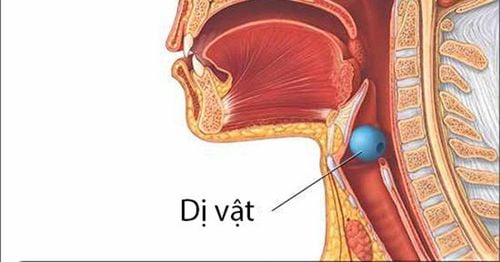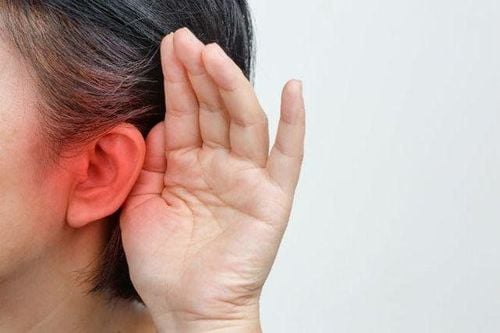This is an automatically translated article.
The labyrinth is a major component of the inner ear. This is an important component related to the ability to hear, keep balance for the body. Labyrinthitis can be caused by acute or chronic infection of the middle ear or mastoid. This condition causes many dangerous complications, surgery is required when medical treatment does not respond and the risk of complications is high.
1. What is labyrinthectomy?
The labyrinth is the main part of the inner ear, because the cavities in the temporal bone form the bony labyrinth and soft membrane sheaths called the membranous labyrinth. The labyrinth is made up of three parts including the semicircular canal, the vestibule, and the cochlea.
The labyrinth has two main functions: hearing and balance thanks to the movement of fluid in the labyrinth and receiving sound from the hearing cells to affect the auditory nerve.
The labyrinth is connected to the middle ear by two round and oval windows. Therefore, if the diseases of the middle ear are not properly treated, there is a risk of spreading into the labyrinth.
Labyrinthitis is common as a complication of acute or chronic mastoid otitis. Inflammatory processes from the middle ear can pass through two windows into the labyrinth, especially in chronic otitis media with cholesteatoma.
Labyrinthitis is a disease that can seriously affect hearing, causing deafness, loss of vestibular function. Not only that, it also causes complications such as meningitis, encephalitis, brain abscess which is very dangerous.
Labyrinthectomy is performed to prevent complications of diseases affecting the labyrinth that cause impaired hearing and balance. Thereby, the doctor will cut out the labyrinth of the inner ear by opening the ear vestibule and removing nerve tissue.

Phẫu thuật khoét mê nhĩ được thực hiện nhằm ngăn ngừa biến chứng làm ảnh hưởng tới mê nhĩ
2. Indications and contraindications of labyrinthectomy
Labyrinth puncture is indicated in cases such as:
Purulent labyrinthitis. Chronic otitis media with cholesteatoma extending into the labyrinth. Malignant lesions extend into the labyrinth. Dizziness due to one-sided vestibular dysfunction, when the hearing threshold is above 75dB, the ability to understand speech is less than 20%. Labyrinthectomy is the first step for access in the case of inner ear canal surgery. Some contraindications such as:
Dizziness due to labyrinthitis. Dizziness but hearing threshold below 75dB. Dizziness persists but in young patients. The patient did not accept the labyrinthine surgery. Patients with severe systemic disease, unwell or with contraindications to anesthetic drugs.
3. How does labyrinthine surgery take place?
3.1 Preparation of Performer: Specialist II in Otorhinolaryngology and must have experience in ear surgery. Patient: Before surgery, the patient is prepared including the patient is explained about surgery, possible complications during and after surgery so that the patient agrees to perform surgery. Shave clean hair 4cm from the earlobe. Position: The patient lies supine with the head turned to the non-surgical ear.

Trước khi thực hiện phẫu thuật khoét mê nhĩ, người bệnh sẽ được các bác sĩ giải thích rõ về phẫu thuật này
3.2 Procedures The patient is fully checked for stable vital indicators, and a monitor is installed. Anesthesia: Optional general anesthesia is appropriate for each patient. When the patient falls into a state of anesthesia, the skin incision can be made behind the ear or in front of the ear. Open the mastoid process wide and open the upper atrium to reveal the head of the malleus and the body of the incus. Identify transverse semicircular canal and segment III facial nerve. This is followed by exposure of the superior and posterior semicircular canals. Open the semicircular canals with a cutting drill, locate the common body between the superior semicircular canals and, once determined, cut out all the semicircular canals, expanding the vestibule. In the case of patients with dizziness, destroy the entire vestibular sensory structures, remove the cystic sinuses and cysts with a hook.
In the case of a patient with purulent labyrinthitis, it is necessary to open the cochlea, remove the stapes, and drill the bone between the round window and the oval window.
Fill the surgical field with autologous adipose tissue. Reposition the skin of the ear canal and eardrum, suture and close the incision. 3.3 Monitoring During surgery, it is necessary to monitor the patient's overall condition, detect complications and handle them early. After surgery, monitor complications, monitor the patient's vital signs. Watch for signs of dizziness and loss of balance: This case needs to be treated with sedatives and vestibular stabilizers. 3.4 Some accidents and how to deal with them. Some complications that may occur due to anesthetic drugs such as hypotension, respiratory failure, hypothermia, cardiac arrhythmia... need to be handled on a case-by-case basis. Cerebrospinal fluid leak: Treat by occluding the vestibule with fatty tissue and externally covering it with the temporal muscle fascia. VII nerve palsy: Monitoring and management is the same as in facial paralysis due to surgical trauma. If you don't go through the labyrinth, you need to carry out surgery again to clean the mew atrium. Labyrinthine surgery is a difficult type of surgery in the treatment of ENT disease that needs to be performed by otolaryngologists. In case of purulent labyrinthitis, it is necessary to treat it early to avoid dangerous complications.
Currently, the ENT specialist - Vinmec International General Hospital is one of the prestigious addresses, trusted by a large number of customers in examining and treating common ENT diseases, tumors. head, face, neck, congenital malformations in the ENT region by common surgical methods such as surgery, microscopic or endoscopic tympanic patch, fistula removal, Bondy surgery, nasopharyngeal aerosol, injection Not only has a system of modern facilities and equipment, Vinmec is also a place to gather a team of experienced doctors and nurses who will greatly assist in the diagnosis. diagnose and detect early signs of abnormality of the patient's body. In particular, with a space designed according to 5-star hotel standards, Vinmec guarantees to bring patients the most comfort, friendliness and peace of mind during the examination and treatment at the Hospital.
Please dial HOTLINE for more information or register for an appointment HERE. Download MyVinmec app to make appointments faster and to manage your bookings easily.













